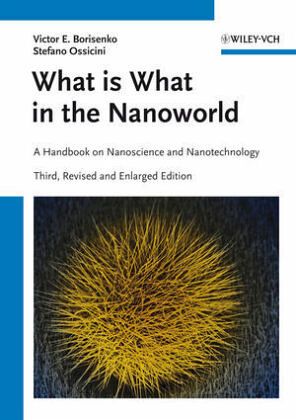Nicht lieferbar

What is What in Nanoworld
A Handbook on Nanoscience and Nanotechnology
Versandkostenfrei!
Nicht lieferbar
Weitere Ausgaben:
Dieses Handbuch fasst in mehr als 2.200 präzise formulierten Einträgen Begriffe, Definitionen, Phänomene und Gesetzmäßigkeiten der Chemie, Physik, Materialwissenschaften und Technologie von Nanostrukturen auf einführendem Niveau zusammen.




